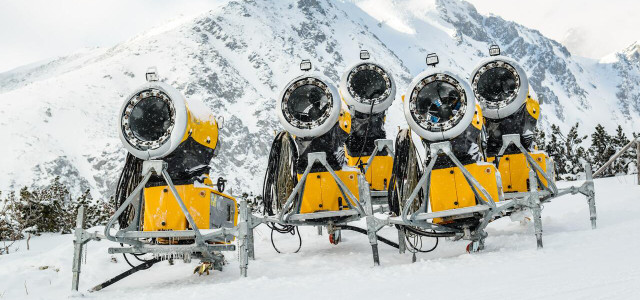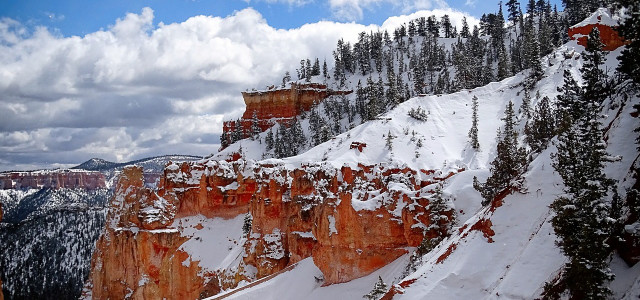As global temperatures rise, more and more mountain resorts rely on the creation of snow. This article explores the sustainability (or lack thereof) in producing and using artificial snow.
Whether you’re one of the millions who enjoy watching the Winter Olympics every four years or you take part in winter sports yourself, it’s important to understand the environmental implications that artificial snow has as climate change becomes more apparent and warmer temperatures influence ski resorts to rely more heavily on snow cannons.
While most people who enjoy ski resorts are probably nature lovers, the looming reality is that warming global temperatures will force more mountain resorts to rely on artificial snow, which begs the question: Is artificial snow sustainable? Keep reading to find out.
What is Artificial Snow?
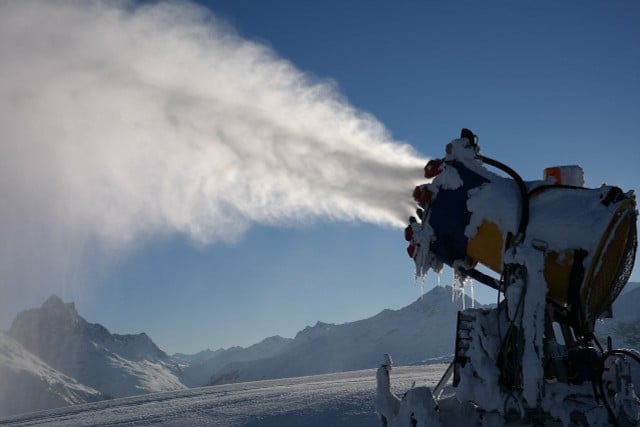
Artificial snow is created to mimic real snow and enhance the environment in areas typically used for winter sports like skiing and snowboarding. It’s produced by forcing water and pressurized air into snow cannons that spray fountains of tiny water droplets meant to freeze before they hit the ground.
For these snow cannons to work, temperatures need to remain below roughly 37 degrees Fahrenheit. However, some artificial snow technology is targeting this to be able to make snow at warmer temperatures and to be able to make better snow in colder climates. Climate change is accelerating at a rapid rate that will likely force some lower-elevation mountain resorts only to be used for warm-temperature activities as they will not be able to maintain cold enough temperatures for snow, neither artificial nor natural.
Is Artificial Snow Sustainable?
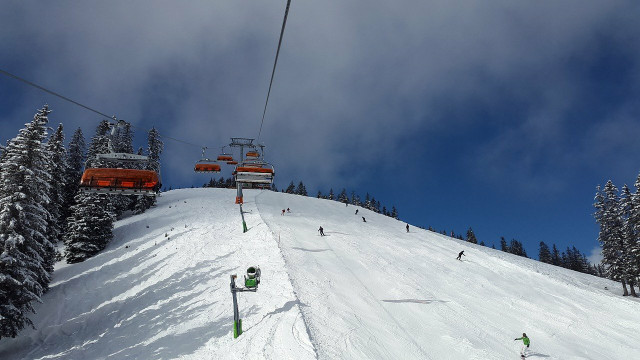


Artificial snow is not sustainable because it requires massive amounts of resources and exacerbates climate change. Artificial snow requires great amounts of energy and water. Additionally, snow cannons require water pipes, compressors, and other infrastructure to operate them, which require resources that must be mined.
Water Use for Artificial Snow



Artificial snow requires uncurbed amounts of resources, the most important being water. The water needed for snow guns is transported either by pump from nearby water sources such as lakes and reservoirs, which can have negative effects on aquatic life.
According to one study done in Italy, more than 5 million gallons of water are required to cover a ski slope. That is roughly 1,700 yards long.
The Winter Olympics has depended upon the creation of artificial snow consecutively since 2010. As was reported by the BBC for the 2014 Winter Olympic Games in Russia, enough water was used for the creation of artificial snow to empty an Olympic-sized swimming pool every hour.
Energy Use for Artificial Snow
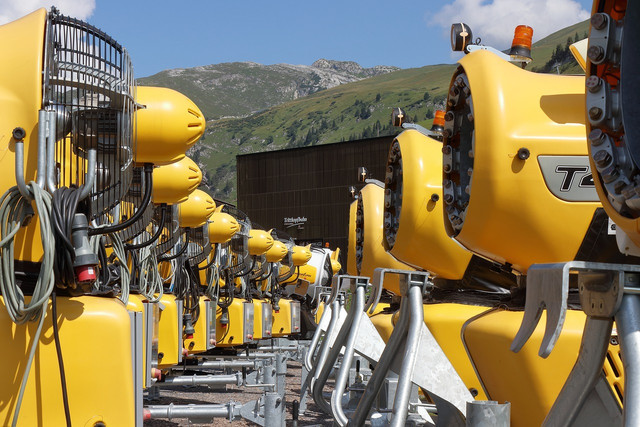


The creation of artificial snow requires large amounts of energy. It uses mainly electricity but also diesel fuel to pump these enormous amounts of water up the hills and mountains to the snow cannons. These instruments emit CO2 and directly contribute to climate change, which causes winters to be shorter already, thus, exacerbating the phenomenon that influences resorts to use snow machines in the first place.
Effects of Artificial Snow on the Environment



A study done in Switzerland found artificial snow to be icier and provide thicker snow cover than natural snow. While this may sound like a positive effect, tampering with ecological balances can have consequences on soil temperatures which may impact vegetation growth. Indeed, ski runs are incredibly problematic for compacting snow and damaging the soil beneath. The combination of using artificial snow on slopes further delays snowmelt and the growth of vegetation.
Conclusion: Is Artificial Snow Sustainable?
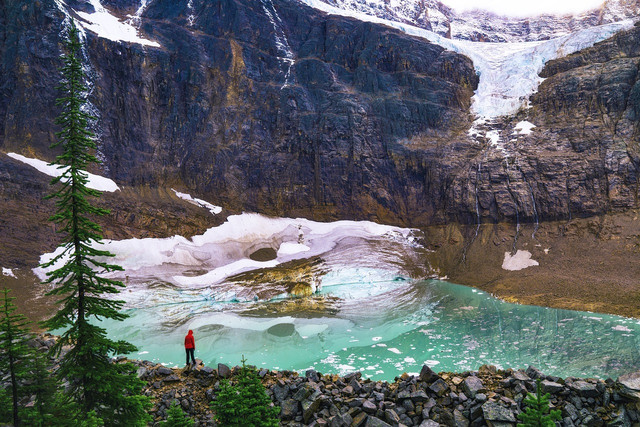


Even though the multi-billion-dollar ski industry seems comfortable, the effects of climate change will likely make some of the low-elevation resorts impossible to maintain with artificial snow as it is too costly and energy-intensive to make enough artificial snow.
The loss of winter sports is one of the many sad dimensions of climate change that we might have to cope with in the nearer future than anyone wants to admit.
As an alternative to reinforcing ski resorts with poor environmental practices, try hiking in winter.
Read More:
- Wild Camping: A Beginner’s Guide to Free Camping in the US & Canada
- The 10 Best National Parks to Visit in Winter
- How to Wash Dirty Sneakers and Other Shoes in the Washing Machine
Do you like this post?






